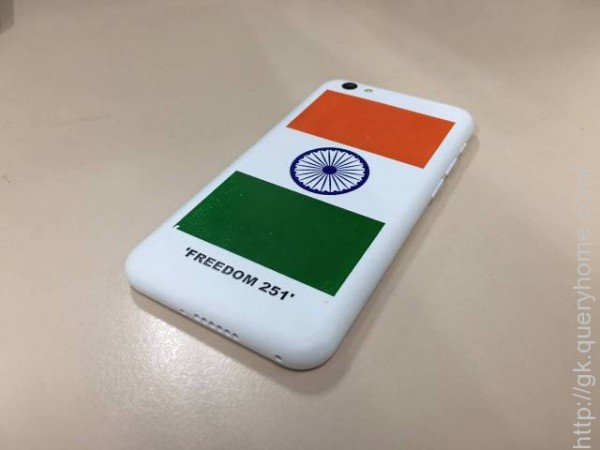The cliche that India is an extremely price conscious market seems to have been proved, yet again! With a smartphone selling at Rs 251 (nearly Rs 300 if you add in the Rs 40 shipping price included), an unknown phone company Ringing Bells has turned into the biggest news maker in the tech and business industry over the last couple of days, and how.

From specs offered at an unbelievably low price point and iPhone-like icons to being a re-branded Adcom Ikon 4 smartphone and Make in India project, a lot has already been said and written about the Freeedom 251. But what still seems baffling is how they will achieve the price point so low for a device that is well speced to be priced a little over a couple of thousands. You don’t even need to be a businessman to do the math.
Last night, Ashok Chadha, President, Ringing Bells took to answering media questions post the launch event and also explained how the company plans to achieve this low price point, and ‘still’ manage to sustain. Firstly, he cleared the air about subsidy by saying there is no government subsidy involved, but the company plans to benefit from economies of scale.
“The Indian market is at 2 crore units a month. If you take 30 percent of that, then you achieve economies of scale,” he had said. The Freedom 251 is priced around Rs 250, which means it could get them a cut of estimated Rs 500 on the Rs 2,500 bill of materials. However, selling Rs 2,500 device at Rs 251 would still incur losses in cr, and how does the company plan to tackle that. Somehow, it appears there’s more that needs to be explained.
It is believed that economies of scale coincides only with large businesses and that too only in relatively few products. For example, Boeing’s aircrafts, Microsoft’s OSes, and Intel’s CPU. However, even these global businesses are said to be dominant in only a few product lines.
“Economies of scale by itself is not enough for a business to keep a competitive advantage. If a business has only an economies of scale advantage, its competitors will be able to take some of its customers and will eventually be able to capture enough market share to remove its scale advantage. The business with the economies of scale advantage needs to be able to keep its larger market share,” points out a post on FallibleInvestor.

He has made some tall claims stating they want to capture nearly 30 percent of the smartphone market by the end of the year. The company apparently has two pilot plants in Noida and Uttarakhand, claiming a capacity of 5 lakh phones and they are looking at an investment of Rs 230-250 crores on these plants.
If some reports are to be believed then the Noida office was deserted and didn’t even have the Ringing Bells banner, instead it was named Bell. Another factor it claims is cutting down on distributors and relying only on the online medium. “With Made in India components, we can save on the 13.8 percent,” Chadha claimed. Also, selling online first could save the costs incurred on large distribution networks, he further claimed.
Well, we’ve seen companies like Motorola, Lenovo, YU and even Xiaomi take that route. Xiaomi sells phones starting at roughly Rs 5,000 to Rs 6,000 and relies on innovative marketing, is known to have made its investors worry lately.
The company also says that they will allow other companies to use their website as a selling platform. If you have visited the 251 Freedom site, I wouldn’t even have to get into details about how they could possibly manage it. Moreover, that’s a really tall claim for a company whose site crashed even before it started taking its first booking order for the Freedom 251.
Another pointer to think about is the company taking four months to deliver the products. Currently, they have 6 lakh visitors per second, and even if a few lakhs end up buying the device via online money, that’s a huge interest to earn in four months. Any reputed bank would give about 3 to 4 percent.
Moreover, the device says it’s a ‘Made in India’ project, but clearly there is no doubt now that it is the same Adcom Ikon 4 being sold on Flipkart at almost 16X times the price at Rs 4,081. Lastly, the device has not been BIS certified. In fact, it is not even listed, points out another report. So, how can we be so sure it is safe to use and adheres to the standards like radiation and so on, that are required for the Indian market. The Indian Cellular Association (ICA) is also known to have raised its concerns.
A cheap device that aims at creating a ‘Digital India’ is a novel plan, but there are still many creases to be ironed out.
